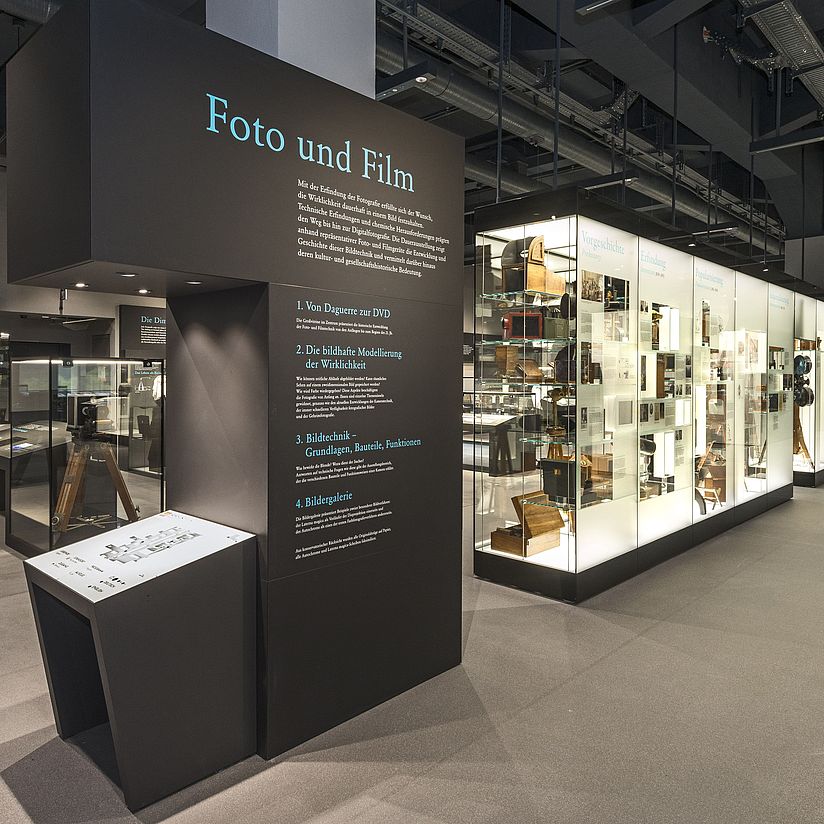
Photo: Deutsches Museum, München | Reinhard Krause Deutsches Museum
Photography and Film
The Technique of the Image
Click! Every day, billions of people press a shutter button, capture images from their everyday lives or vacations with a cell phone, tablet or camera. Thanks to digital technology, the photos and films are immediately visible and can be distributed worldwide as quickly as they were taken. The recording, reproduction and circulation of photographic images are influenced in a decisive way by the equipment used. The exhibition Photography and Film shows that this interrelationship between technology and image has shaped photography since its beginnings in the 1830s. It is dedicated to the development of apparatus and reproduction media from prehistory to the digital era. “Today, we communicate more than ever before via photos and films. That makes it all the more exciting to look at the history of this cultural technique that has become commonplace and to learn about its 200-year development,” says Sonja Neumann, the exhibition’s curator.
There is a lot to see! The Photography and Film exhibition is divided into four sections. At the center is the historical development of apparatus and reproduction media in a large display case that extends through the entire exhibition space. In addition, under the overarching concept of the pictorial modeling of reality, there are thematic islands on digital technology, color, space, time, the fast and the indiscreet image, and sound film. The basics, components and functions of camera technology are explained in the third section. Finally, two selected image processes are presented in the Gallery of Images: Laterna magica discs as the forerunner of slide projection on the one hand, and autochrome as one of the first colour photography processes on the other. “It’s fascinating what you used to have to go through to make a photograph,” Sonja Neumann says, adding: “But there’s no question that taking good photos today is as challenging as it used to be.” In the exhibition Photography and Film, there are plenty of motifs to get a comprehensive picture of this cultural technique that is so commonplace today.
Facts and figures:
Location: Level 2
Exhibition area: approx. 500 sqm
Exhibits: approx. 1200
Demos and media stations: 10 and 16
Diorama: 1
Highlight: The light-tone cinema projector
In 1919, Joseph Engl, Joseph Massolle and Hans Vogt founded the inventors' association "Triergon" (Work of the Three) in Berlin. They developed the principle of the optical sound film, in which the sound is recorded photographically, and were able to stage the first screenings with this optical sound cinema projector as early as 1922.
Download the Press Release
PM_Photography_and_Film.pdf (PDF 37 MB)
